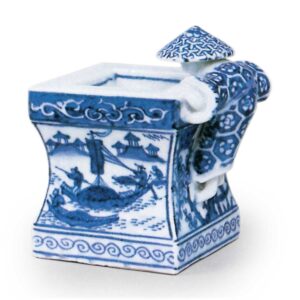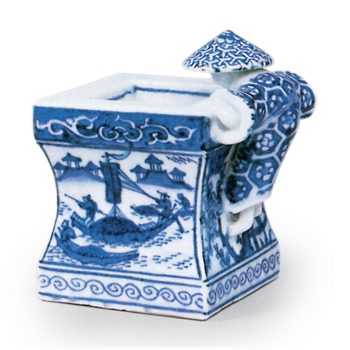
Height 6.8cm, Long diameter 5.9cm, Base diameter 4.5cm
Some of the bowls and braziers made in the late Ming dynasty have figures on the rim, and these are commonly referred to as “ikkanjin”. This lid rest is also based on ikkanjin, and shows a figure peering into a well with a hand on the well rim.
The four sides of the body depict landscapes, pine, bamboo and plum trees, Chinese children, and tortoiseshell patterns, and the person wearing a conical hat is wearing a costume with a tortoiseshell pattern. It is a small piece, but it is the most vivid in color of the Shousui copies that have been preserved. The words “Dai Nihon Eiraku Zou” are written in underglaze blue on the bottom, and the foot ring is a clay foot ring. In addition, the mark “Kawahin Shiryū” is stamped in the center of the inside bottom, and on the lid of the box, it is written “Shōzu Ikkanjin Futaoki Zenichirō Zō”.



